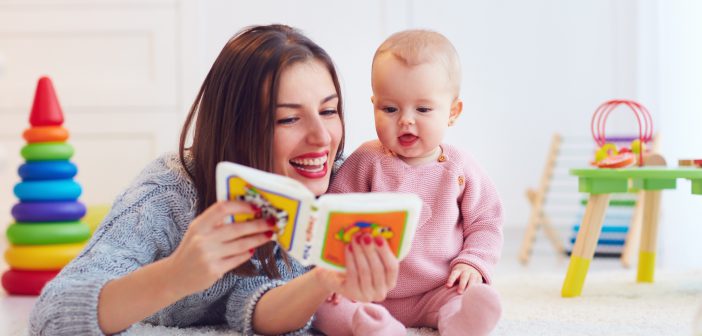Understanding a child’s developmental journey is an integral part of parenthood. It’s not just about witnessing the first steps or the first time they utter ‘mama’ or ‘dada.’ Rather, it’s about being aware of the key milestones in their speech and language development.
Developmental milestones can serve as telling signs of their overall cognitive and emotional growth. Examples include the following:
- Babies start making coo and vowel-like sounds.
- Babies start babbling and making consonant-like sounds.
- Babies start imitating speech sounds.
Speech and language skills are at the heart of your child’s social interactions—their ability to express emotions and learn. As a mother, it’s essential to recognize these milestones to support their development and be able to identify potential delays or problems.
With this knowledge, moms can better communicate with their children, support their growth, and encourage their progress. If you need help, consider visiting speech pathology centers like Kid Speak Perth, which aim to improve your child’s speech, language, literacy, and social skills as they grow.

Knowing The Milestones
Children’s speech and language development follow a predictable sequence. For instance, a baby will usually start babbling before they say their first words and most kids will speak in sentences before they start telling stories.
Here’s a breakdown of what you should look out for at different ages:
- Babies (0-12 Months)
The first year of a child’s life is a fascinating period filled with significant growth and development, particularly in speech and language. Initially, babies are observers, absorbing the sounds, tones, and patterns of the language used around them.
The journey begins with cooing and gurgling sounds often seen within the first two months. This is the baby’s way of experimenting with sounds and engaging with their environment.
When the baby reaches the six-month mark, they’ll move on to a more advanced form of vocal experimentation—babbling, producing sounds like ‘ba-ba’ or ‘ga-ga.’ It’s a crucial phase, signifying the development of their ability to create sounds used in speech.
Toward the end of the first year, most babies reach an exciting milestone—blurting out their first words. These initial words are often simple, such as ‘mama’ or ‘dada,’ and are a significant leap forward in the baby’s speech and language development.
- Toddlers (1-3 Years)
The period between one and three years marks an exciting time in a child’s speech and language development. During this period, toddlers are able to make significant advancements, moving from simple words to more complex sentences.
When a child hits the one-year mark, they often begin to use one or two words purposefully. Over time, their vocabulary expands, and by the age of two, most toddlers can use about 50 words and start combining them into two-word phrases. Common phrases include ‘want milk,’ ‘more cookie,’ or ‘go park.’ It’s a delightful phase, with children beginning to express their desires and observations.
Additionally, toddlers’ understanding of language outpaces their ability to speak. They start to follow simple instructions such as ‘Pick up the toy’ or ‘Give me the ball.’ They also begin to recognize and identify common objects and pictures when named.
Pronoun usage also comes into play around this time. Toddlers start to use pronouns like ‘I,’ ‘me,’ and ‘you’ correctly, indicating a growing understanding of themselves and others.
When a child reaches the three-year mark, their vocabulary expands rapidly, and they start forming complex sentences. Their speech is often understandable, even to other people. They can understand and answer simple questions, showing a leap in their comprehension abilities.
If your child has delayed speech, visit speech pathology centers to improve their language and social skills.
- School Age (5 Years and Above)
As children move from preschool to school age, their speech and language skills become more refined and sophisticated. They start to master the basic language rules and understand more abstract concepts.
By the age of 5, children are usually able to speak in full sentences and share their ideas. Plus, their vocabulary is extensive, allowing them to describe things in detail, express their feelings, and ask complex questions.
Moreover, a significant development in this stage is their understanding and use of comparative words like ‘heavier,’ ‘smaller,’ or ‘faster.’ This shows a growing understanding of the relationship between different things—a crucial cognitive skill.
The understanding of more complex grammatical structures also sets in. They can form sentences using correct tense and start using complex sentences, combining two or more thoughts.
Reading and writing skills also start to emerge during the school-age years. Children begin to read simple books, recognize familiar words, and write their names. They start to grasp basic spelling rules and can write simple sentences.
Final Thoughts
As a mom, being aware of the speech and language milestones of your child’s development will equip you with the knowledge to support, encourage, and nurture their growth. It’s not about rushing them through stages but understanding and enjoying the journey.
Remember, each child is unique and may develop at their own pace. These are general guidelines and not strict rules. However, knowing these milestones can help parents effectively support their child’s speech and language development.




This is a very beautiful and helpful article. I believe the information in the article will be useful to readers. I really enjoyed it; thank you for sharing. In fall guys, you can also play new games.
I know that it is really important to pay attention to all details.
I also really like kids and always look for a lot of various ways about how to buy a high-quality clothes. With thetrendytoddlers.com baby girl clothes it is really easy to find only the best solutions. This professional service is having a wide range of various forms of girl clothes and affordable prices as well.
Indulge in the art of exquisite grooming, where every aspect is thoughtfully curated to ensure your satisfaction. From the moment you step through our doors, you’ll be greeted by a team of master barbers, each a maestro in their craft. https://premiumbarbershop.com/158-e-39th-st/
A good option to give more options for learning and make life easier for him in the future. I use something similar for my youngest son. With the older one, it’s much more difficult, because he is already in high school and I often catch him visiting the typemyessay site where he is looking for help with assignments